Effective Academic Strategies to Teach Students on the Autism Spectrum
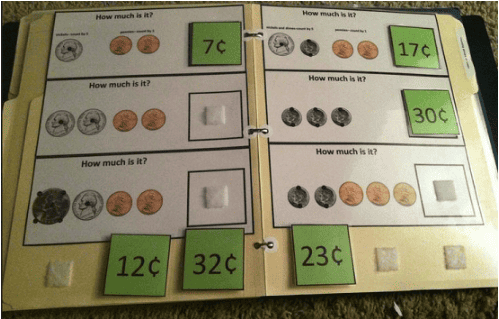
|
Getting your Trinity Audio player ready...
|
I Noticed Something When I Spent Time with Students on the Autism Spectrum
Working for over 13 years as a school psychologist, I have had a lot of opportunities to observe students on the autism spectrum in the classroom. One thing that I consistently noticed, particularly for kids who struggled to communicate verbally, was an excellent ability to complete hands-on, interactive tasks with a clear visual ending and a reduced amount of visual clutter.
Something I also noticed; however, was that when staff tried to explain these tasks verbally or used a lot of verbal prompting during the task, the students often looked around, stood up, walked away, etc.
However, when the task was demonstrated and prompts were gestural rather than verbal, students participated more readily and often learned how to complete the tasks themselves.
Research Support Building Visual Structure Into Academic Tasks for Students on the Spectrum
Research supports the theory that building visual structure into tasks is an effective approach to addressing the learning needs of students on the autism spectrum.
How Do File Folder Games Fit In?
A perfect example of an interactive, visually-structured task is file folder games. File folder games are often seen in manila file folders, hence the name; but you can easily use regular paper to make “file folder” games.
File folder games can be purchased or downloaded. You can also make them yourself, which I describe in more detail below.
Let’s Take a Look at Some Examples of File Folder Games
In this first example, the student must put the pieces together to make a total of four tractors.
In this task the student practices problem solving, reasoning, and sequencing skills, while also learning the vehicles are different in some ways and the same in others. Colors and counting can also be incorporated into this task. Bring this activity to life by showing the student real tractors or a tractor video.
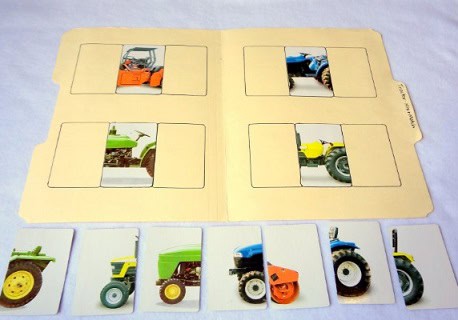
Side-Note: In my observations, when verbal explanations were used, they were most helpful when they were brief (one to two words) and to the point. An example of this would be pointing to each tractor, while simultaneously saying its color, after the student puts the pictures together.
In this second example of a file folder game, the purpose of the task is to practice counting and number recognition. Each number goes on the cone with the corresponding number of dots.
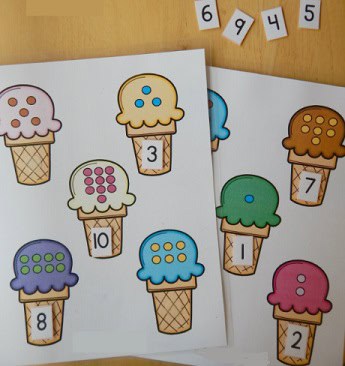
Again, you can turn this into a real-life activity. For instance, you could make cupcakes, draw numbers on the wrappers and ask your student/child to put toppings on to match the numbers on the wrapper such as five M&M’s on the number 5 cupcake.
If you make the cupcakes yourself, allow the child to participate as much as possible in the baking process; another practical activity that includes hands-on learning, visual input, and a clear beginning and end.
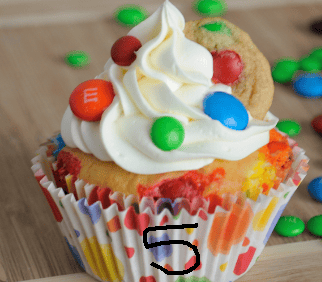
That is the great thing about file folders. You can turn any activity into a hands-on, interactive task and connect it to something in real life.
Many children, not just those on the autism spectrum, like these kinds of activities because they allow students to actively participate. Many students learn best by doing and seeing rather than listening or reading about a concept.
You can also try to create or find tasks that incorporate a students’ interests. For instance, if you know your child loves a certain animal, character, or food you can find a way to include that in the activity.
Challenging Concepts Can Be Taught with File Folder Games
Something else I love about file folder games is that you can even use them to teach more difficult or abstract concepts. For instance, you can teach fractions by having a student match a visual representation to a number representation. In the example below, you could cut out the numbers and teach the student to place each number over its corresponding picture.

Again, you can use it to create a real-life example. Maybe something with pie or pizza. For example, have the student share or serve a fraction of the pie.
File folder games can be used to teach all subjects and a variety of concepts. It really is limitless and so many children I know, including my own son, love to engage in these types of closed-ended, visual, interactive activities.

How Does Technology Fit In?
A lot of apps now are starting to incorporate these visual/interactive. Whereas with real file folders games the pieces are movable, in an app the child drags the pieces to the correct location.
Both (laminated paper and apps) allow the student to interact in the activity and manipulate the pieces. ABCmouse.com is a great example of an app that allows for this type of visual interactive learning, specifically the puzzle section of the app.
Below is a sample of an ABCmouse.com puzzle that teaches about counting.

Here is another ABCmouse puzzle that teaches about the structure of a plant. The child has to drag the plant parts into their correct locations.
I love how the student needs to focus on the small details in order to make the whole picture. And again, both the counting activity and plant activity can easily be turned into a real-life experience.
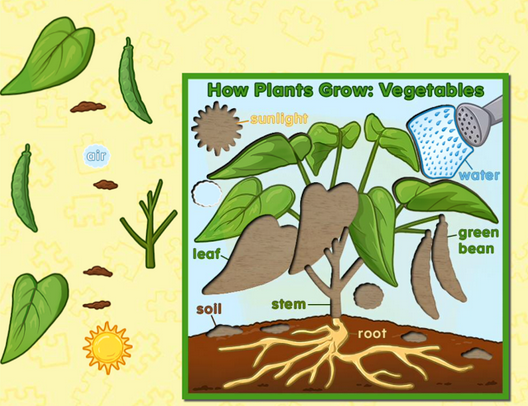
How Can You Make File Folder Activities at Home?
Below are some examples of file folder games that I made at home on Microsoft Word. Feel free to take a screenshot and print these out.
In the activity below, students are asked to match the objects on the left to the objects on the right. They can do this by pointing, drawing a line, cutting the images on the left out and putting them on the images on the right, etc.
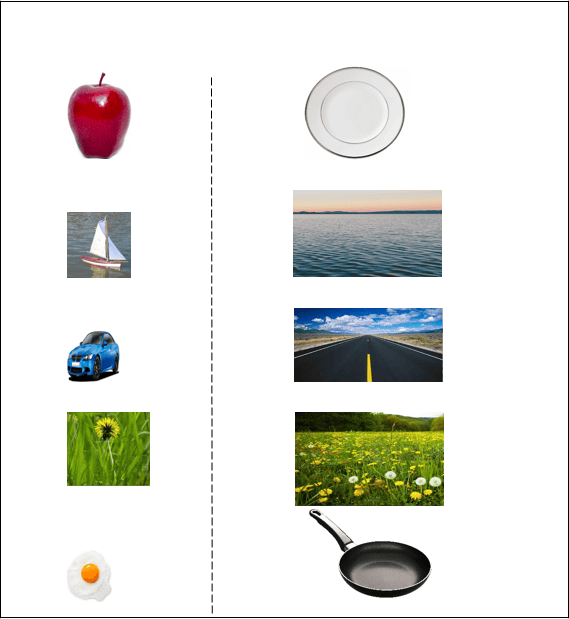
This task helps students make connections and demonstrate knowledge about related concepts. This can also be transferred to real-life scenarios (e.g., putting an apple on a plate, cooking an egg, picking a flower from a field, driving a car on the road, etc.)
To turn your own documents into reusable file folder games, you would cut out the words or images that you want to make movable, laminate the paper or folder, laminate the movable pieces, and use Velcro to connect the pieces.
Are Reading Strategies Different for Students on the Spectrum?
There are some students, particularly those with language difficulties, that struggle to learn phonics and phonemic awareness (letter-sound correspondence/segmenting and blending sounds). Sometimes these challenges occur with students on the spectrum. Another approach to teaching reading to students who struggle to learn phonics is through memorization of word forms (knowing how the word looks).
Therefore, the purpose of the activity I made below is to help students remember how the word looks and what concept it represents. Just like with all file folder games, this is something that can be practiced again and again until the student has all the answers correct.
Directions: Cut out the words and put them under the corresponding picture.
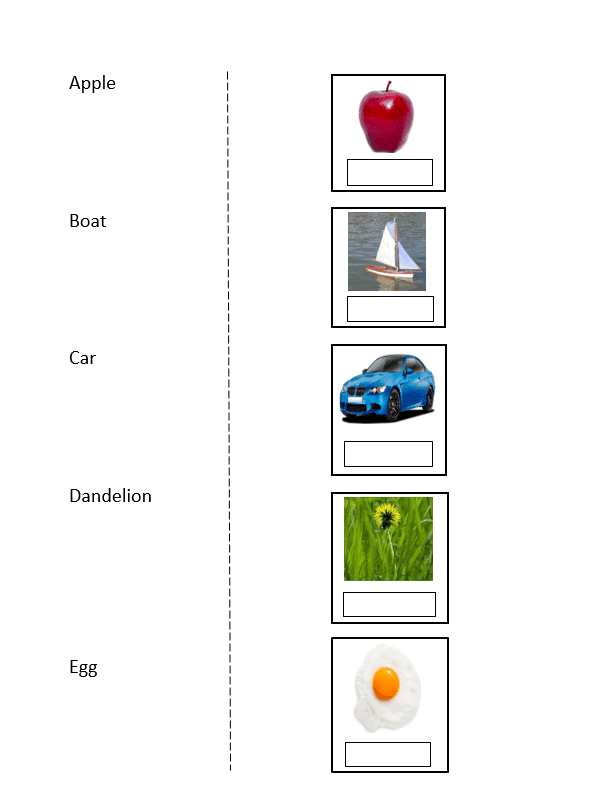
You can do a search on Google for Free File Folder Games and a variety of sites that offer printable activities will come up.
You can also purchase pre-made file folder games online that are already laminated, encompassing a variety of concepts related to reading, math, science, and more.
If you would like to laminate your own products, an office supply store (e.g., Staples) provides laminating services. You can also purchase your own laminator. They are fairly inexpensive.
Recommended Articles:
- 15 Behavior Strategies for Children on the Autism Spectrum
- Sample After School Schedule for Kids with Sensory Needs and Impulsive/Hyperactive Behaviors
- What is a Certified Autism Specialist? Why Get Certified as a CAS?
Education and Behavior – A Free Online Library of Research-Based Strategies for Children; Keeping Us All on the Same Page!






